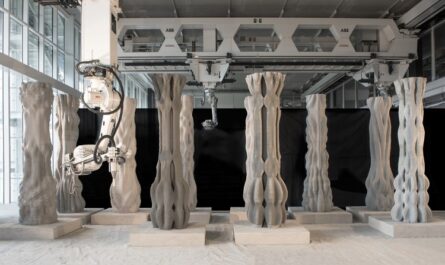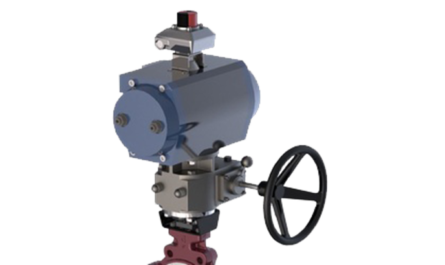Bioelectronics is an emerging interdisciplinary field that involves the merger of biology and electronics. It utilizes living cells and tissues to interface with electronic materials and devices for applications ranging from healthcare to environmental monitoring. In this article, we explore the promising field of bioelectronics and discuss its potential applications and impact on our lives.
What is Bioelectronics?
Bioelectronics refers to the integration of living cells and tissues with non-living electronic components like transistors, microelectrodes, biosensors etc. The field utilizes biocompatible materials and devices to interact with biological systems at the cellular and molecular levels. At its core, bioelectronics aims to develop novel technologies that interface biological and synthetic materials to better understand normal physiology as well as diagnose and treat diseases.
Some key aspects of bioelectronics include:
Using micro- and nano-fabrication techniques to develop biocompatible electronic interfaces that do not adversely affect living cells and tissues.
Engineering electronic devices that can stimulate and monitor biological processes at the cellular and molecular levels inside living systems.
Developing biosensors that can detect biological molecules and signals from cells and translate them into electronic signals.
Designing implantable and wearable devices that can closely interact with the human body for various therapeutic and diagnostic applications.
Applications in Healthcare
One of the most promising applications of bioelectronics is in healthcare and medicine. Some emerging areas where this field can make a significant impact include:
Neural Interfaces: Neural interfacing technologies aim to develop brain-computer interfaces that can restore or enhance neurological functions. Implantable devices are being designed to interface with neurons in the brain and spinal cord to treat conditions like epilepsy, Parkinson’s disease and spinal cord injuries. This approach holds potential to treat various neurological disorders.
Cardiac Devices: Pacemakers, implantable cardioverter-defibrillators (ICDs) use bioelectronic interfaces to monitor and regulate abnormal heart rhythms. The next generation of cardiac devices are being designed to better interface with heart tissues using microelectrode arrays and biosensors. This can help improve diagnosis and treatment of various heart conditions.
Diabetes Management: Bioelectronic interfaces are aiding in the development of better insulin delivery systems and continuous glucose monitoring devices. Technologies like closed-loop insulin pumps use real-time glucose sensing and bioelectronic controls to more precisely manage diabetes.
Tissue Engineering: Bioelectronics is playing a crucial role in regenerative medicine and tissue engineering applications. Use of biomaterials, stem cells, growth factors and electrical stimulation techniques can help develop bioengineered tissues and even organoids for drug development and disease modeling.
These are just some of the many ways Bioelectronic is transforming healthcare by developing novel diagnostic and therapeutic devices that can interface intimately with the human body at the cellular and molecular scales.
Environmental and Agricultural Applications
Beyond healthcare, bioelectronics also has applications in environmental monitoring and sustainable agriculture:
Biosensors for Pollution Monitoring: Living organisms like plants, algae and microbes can be used as sensitive biological sensors for toxins, heavy metals, petroleum pollutants etc. Coupling these with bioelectronic interfaces can develop real-time, low-cost pollution monitoring biosensors for environmental protection.
Plant Growth Interfaces: Technologies are being developed to design bioelectronic interfaces integrated with plant tissues and microbes in the soil. Such interfaces aim to optimize conditions like light, water, nutrients to enhance crop yield. They also study plant-microbe interactions and responses to various abiotic/biotic stresses.
Photosynthetic Biohybrid Systems: Research is ongoing to engineer synthetic biohybrid systems coupling photosynthetic organisms like cyanobacteria with electronic circuits. Such systems hold promise for sustainable energy generation by utilizing solar energy captured by living organisms.
Bioremediation Aids: Bioelectronics can aid bioremediation of polluted areas by designing interfaces between microbes, plants and electronic systems. These can help optimize microbial degradation of contaminants by precisely controlling biophysical parameters in contaminated sites.
Future Prospects and Challenges
The future of bioelectronics looks bright as more interdisciplinary research and funding pours into this promising field at the intersection of living and non-living systems. With advancements in biocompatible materials, microfabrication, tissue engineering and nanotechnology, the field is set to revolutionize various applications in healthcare, biotechnology and environmental monitoring in the coming decades. However, several challenges still remain such as long term biocompatibility and biostability of electronic-bio interfaces inside complex biological environments. The development of renewable and self-powered bioelectronic systems also needs to be improved. With time, the field of bioelectronics will certainly help address many unmet medical needs and also aid in developing sustainable solutions leveraging biological principles. Continuous research promises to take this field to new heights, ultimately enhancing our understanding of life through the merger of biology and electronics.
*Note:
1. Source: Coherent Market Insights, Public sources, Desk research
2. We have leveraged AI tools to mine information and compile it



